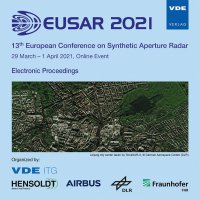First Result of Spaceborne Dual-Channel Spotlight SAR GMTI Experiment Using Chinese Gaofen-3 Satelite
Konferenz: EUSAR 2021 - 13th European Conference on Synthetic Aperture Radar
29.03.2021 - 01.04.2021 in online
Tagungsband: EUSAR 2021
Seiten: 5Sprache: EnglischTyp: PDF
Autoren:
Shen, Wenjie (Aerospace Information Research Institute,Chinese Academy of Science, Beijing, China & University of Chinese Academy of Science (UCAS), Beijing, China & Key Laboratory of Technology in Geo-spatial Information Processing and Application system, Beijing, China & North China University of Technology, Beijing, China)
Hong, Wen; Han, Bing; Yu, Weidong (Aerospace Information Research Institute,Chinese Academy of Science, Beijing, China)
Zhao, Liangbo; Zhang, Qingjun (Beijing Institute of Spacecraft System Engineering, China Academy of Space Technology, Beijing, China)
Lin, Yun; Wang, Yanping (North China University of Technology, Beijing, China)
Bi, Hui (College of Electronic and Information Engineering, Nanjing University of Aeronautics and Astronautics, Nanjing, China)
Inhalt:
Ground Moving Target Indication(GMTI) using spaceborne SAR sensor is a hot topic. Some of growing trends in GMTI are long time monitoring, better detection capability and high resolution imaging of moving targets. To fulfill these conditions, a novel spaceborne dual-channel spotlight SAR experimental mode is designed. The experiments uses Chinese Gaofen-3 SAR satelite. The first experiment is conducted in June 2019 to validate the mode and assess the data. This paper presents preliminary data processing results, include essential preprocess and along-track interferometry (ATI) and displaced phase centre antenna (DPCA) results. The results shows great potential in target detection and high resolution imaging.


